by James Donaldson
This past Sunday, the 22nd of January, myself and 1500 other runners took part in the Canterbury 10 mile road race. A famous foot race that I’d heard about long before I came to CCCU to study for my PhD. This year there would be a lot more involvement with the university as general management and parking for the event had been handed over to CCCU Sport in conjunction with Invicta East Kent running club. The route itself started from outside the Sports Centre along Spring Lane and headed into the farm roads behind campus, towards Bridge, through to Bekesbourne and then back along through the farmland to finish outside the Sports Centre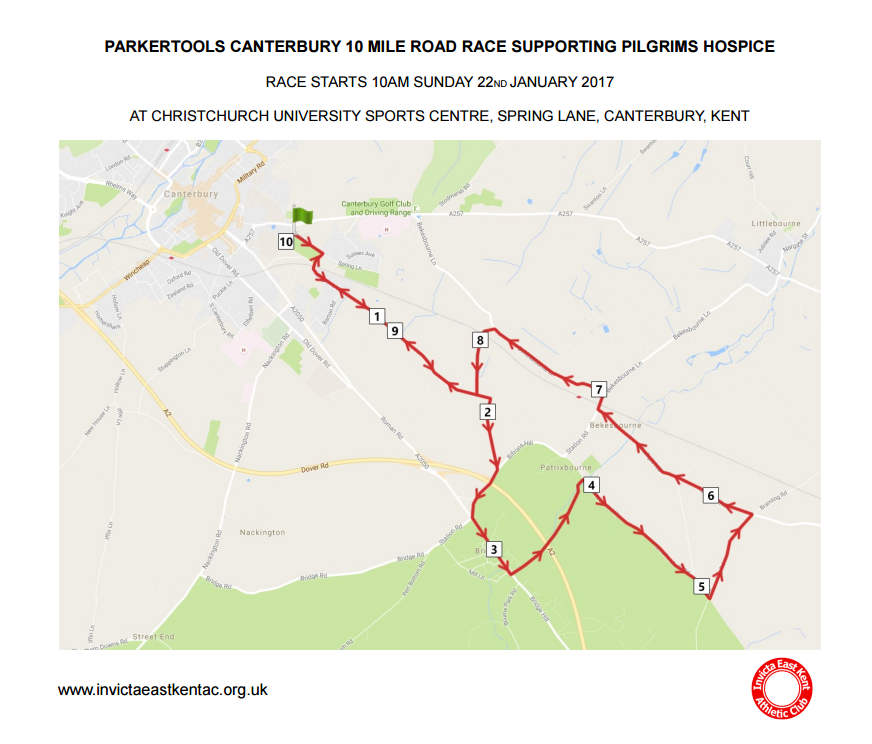
While I was keen to improve on last years’ time of 1:02:37, my training has been focused on building up my ‘base fitness’ and strength in preparation for the London Marathon. Most of my training has involved long, slow running, with regular strength and conditioning (S&C) sessions at SportsLab 2-3 times a week. So by race week this year I thought that I would be slightly behind in terms of my training and fitness from the previous year, and was hoping to just equal my time from the previous year or get as close as possible. In addition to the new stimulus of S&C training, another thing that lead me to believe this was possible was that last year I started the race at a disastrously fast pace and really struggled towards the end.
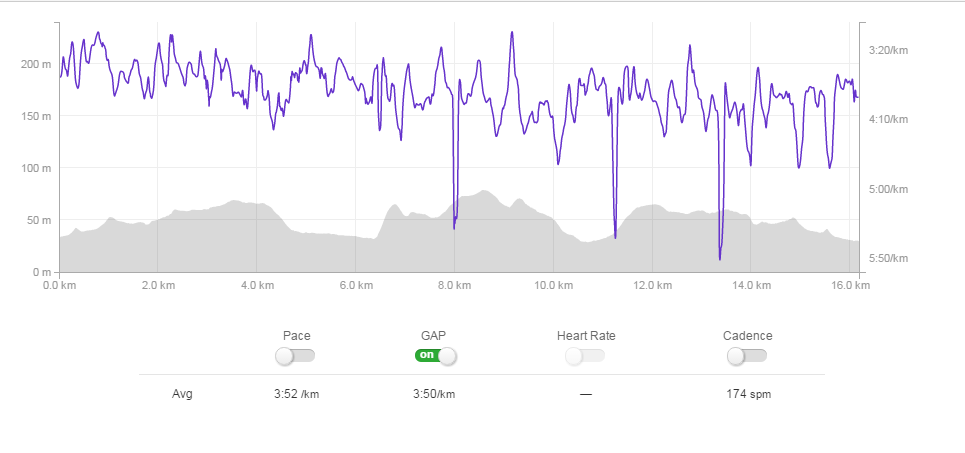
As you can see in the above chart, my second half was extremely painful and slow compared to the first half, so perhaps with some more conservative pacing I could equal my time or go slightly faster… To keep my marathon focus and maintain my weekly mileage I didn’t take a taper week (cutting down distance the week before) and actually ran my highest total weekly distance since getting back into training after Ironman Mallorca. On race morning, I jogged about 5km down to the start from my house and collected my number from the Sports Centre. I met up with several of my triathlon club mates who had also entered the race and travelled down from Greenwich that morning.
There was a massive field this year and I think CCCU Sport and Invicta did an outstanding job in providing adequate parking, bag drops, and toilets (always vitally important!). The race started slowly for me as I was badly positioned, but with the mantra of not going out as hard as last year, this wasn’t necessarily a bad thing. Despite it being incredibly foggy, I found it quite peaceful as not being able to see what was coming up in the distance meant that I couldn’t see the hills and worry about them! I started at a comfortable pace and settled down, never pushing myself to that red line over my anaerobic threshold in order to save my legs for the hills. I usually struggle big time on the hills, both going up and recovering once at the top, but I feel that the S&C training this year has really improved my ability to power up them and not suffer as much as I used to. I was managing to overtake people going up, which was an entirely new experience for me! On the other hand, my downhill speed seemed a bit slower this year as a few people passed me going down, but I think this saved my legs as they didn’t take so much of a battering on the long drop into Bridge at about mile 3.
The course is undulating but there are two substantial hills that need to be negotiated. They come at about 5 and 7 miles into the route, and they need to be taken sensibly as there isn’t much respite on this course, every uphill is followed up with more undulations. Once I passed the halfway point I felt like I was just waiting for the moment my legs would start burning and I’d need to slow down, but it never seemed to happen. By the time I approached 8 miles I knew that it was basically downhill to the finish and my club mate Peter was setting a strong pace, I just had to hang onto his shoes to the finish!
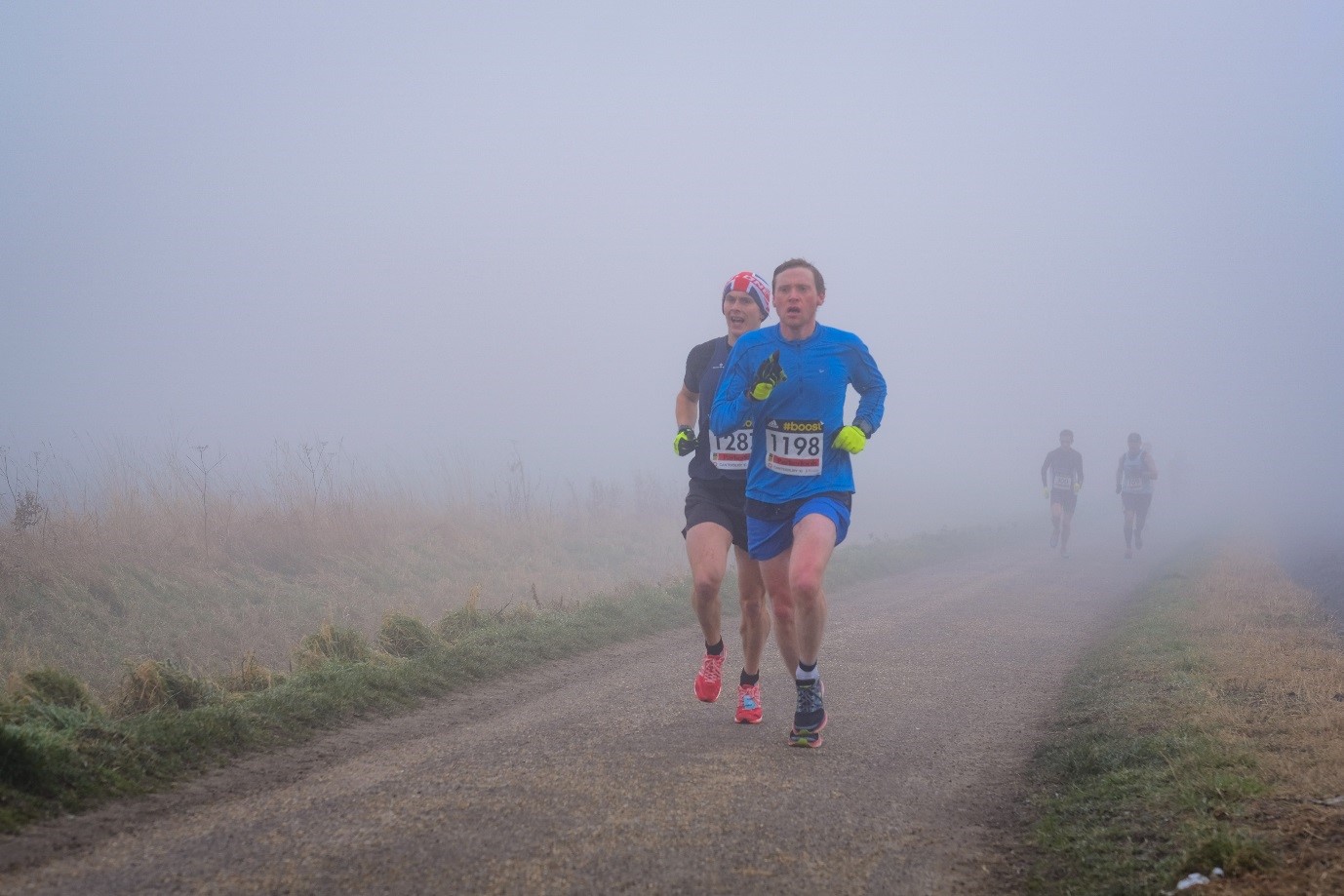
As we weaved through the final residential streets to the end Peter pulled away, but I had the hometown advantage as the thick fog meant he didn’t know where the turns were! Being the good sport that I am (and because he was my wind-breaker for nearly half the race) I yelled out to him which side of the road to hug and what direction the turns would be. He finished strongly about 50 meters ahead of me and I crossed the line next in 1:00:57 for 27th place, which was about 1 minute 40 seconds faster than last year!
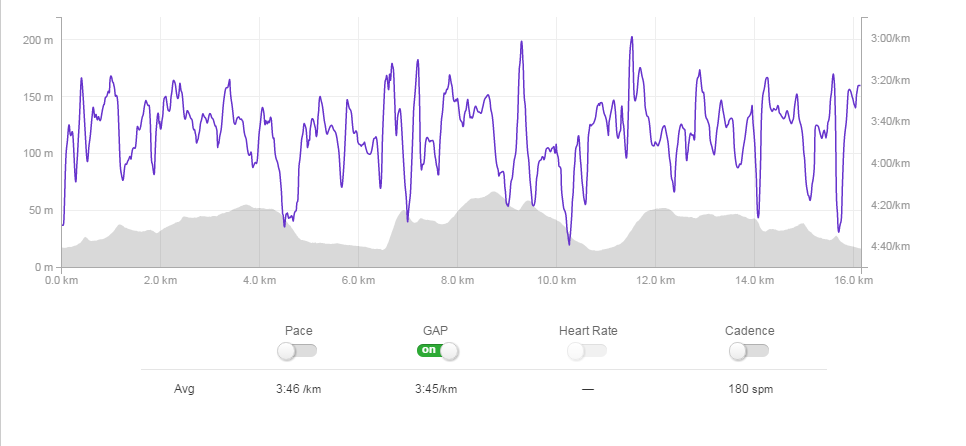
To assess the efficacy of my new S&C training plan executed at SportsLab, I have compared my weekly run distance from this year and last year over the 8 weeks before the Canterbury 10. Additionally, to give a better picture of my fitness, I have done the same comparison for a practice race that I ran each year 1 month before the Canterbury 10, which was a 10km race in Greenwich.
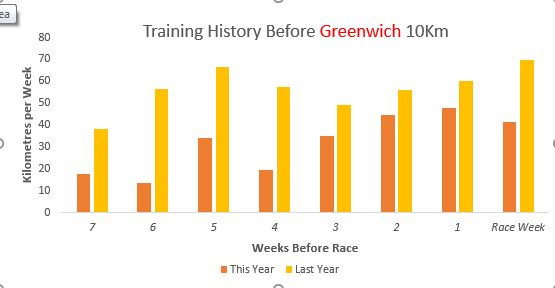
As you can see above, my weekly run training was much higher in the first year before the Greenwich 10km, which might explain the slower time. This year, following the Greenwich 10km, I started to build my weekly mileage and also included 2-3 strength and conditioning sessions per week. The sessions lasted about half an hour and I stuck to them over the next 5 weeks, all the way up to 2 days before the Canterbury 10. These sessions included a short amount of whole body exercises including: barbell thrusters, back squats, clean & press and deadlifts. We did a range of weight and intensity, from high intensity intervals to 1 rep max lifts. By the week of the Canterbury 10 my running average mileage was nearly exactly the same as last year’s levels.
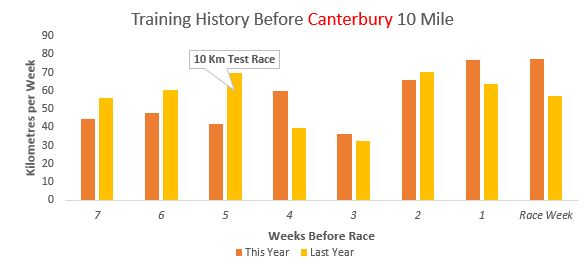
The result was that I ran much faster at this year’s Canterbury 10, despite starting from a lower baseline of fitness, which was demonstrated in the slower Greenwich 10km. In the 5 week block of training between the 10km baseline race and the Canterbury 10, my run-specific training load was nearly identical between each year.

This analysis leads me to believe that the large performance in improvement can be attributed to the 5-week programme of S&C training that I performed under the expert eyes of James & Lucy at SportsLab. However, this doesn’t mean that I believe if I hadn’t also increased my run volume in the weeks prior to the race I would still have ran faster this year. Rather, the combination of improved glute and hip strength and increased aerobic performance lead to a greater overall performance enhancement. The best training programmes are holistic and will train you as an athlete, rather than ‘just a runner’ or ‘just a cyclist’, which means addressing all components of fitness, with an emphasis on the sport-specific systems.
I was really pleased with this year’s race and am hoping to keep up my current fitness for now. I’ll be racing locally again in the Deal and Paddock Wood half marathons in the lead up to the London Marathon in April, where I will also be fundraising for Beating Bowel Cancer, which unfortunately runs in my family.
 Christ Church Sport
Christ Church Sport James Cook
James Cook 886
886

